Here is a conundrum: If vitreous enamels, and related tools and supplies, aren’t readily available, people can’t enamel. If people can’t enamel, suppliers can’t sell supplies. This chicken-and-egg problem is a huge obstacle for the growth of enameling in the U.S. and worldwide. How do people who use vitreous enamel deal with this conundrum? How does it shape enameling today, and how will it affect enameling’s future?
Share the Heat is pleased to announce a series of blogposts about tools and supplies for the enameling community. We will be examining the state of supply availability in interviews with several small independent U.S. suppliers, including Coral Shaffer of Enamelwork Supply, and Scott Ellis of e-namels.com. We will also be posting insider tips on how to find supply resources.
- Part 1 of this introduction will give a little background and recent history in order to put the tool/supply conundrum into perspective. It will focus on why supplies, especially enamel powders are not easy to find; why there is not much diversity in enamels that are available for sale; and why quality and customer service are sometimes problematic.
- Part 2 will be about industrial enameling supplies and tools specific to enameling, such as firing and application tools.
- Part 3 will focus on how the internet has changed availability and information about supplies and supply sources.
The Center for Enamel Art is committed to helping enamelists in their professional development. We believe strongly in the sharing of resources of all kind. We hope that this series of posts begins a much-needed discussion about one problem that has hindered the growth of enameling as a recognized art medium.
Where have all the manufacturers gone?
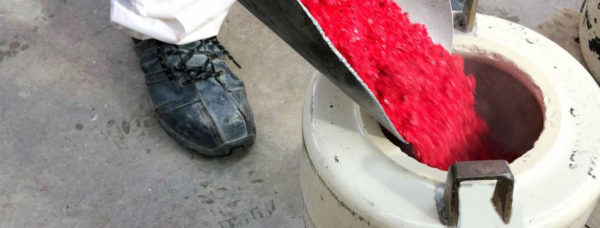
putting enamel in a ball mill
Before Thompson
First, let’s look at the evolution of enameling in the U.S. over the last hundred years. Read More →

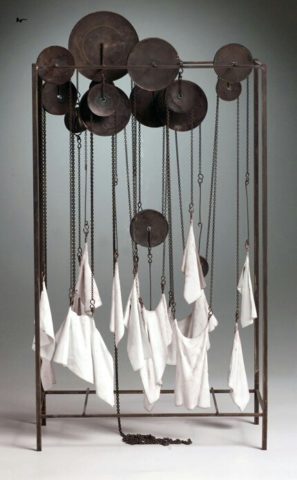
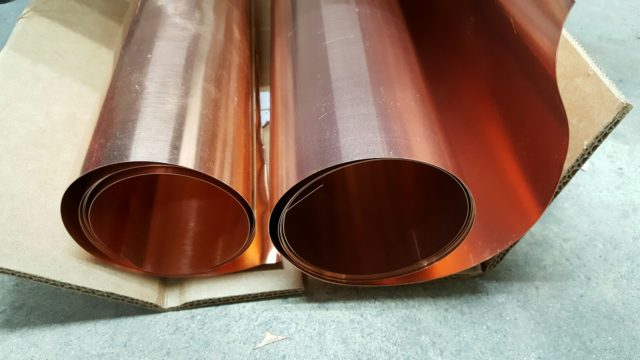
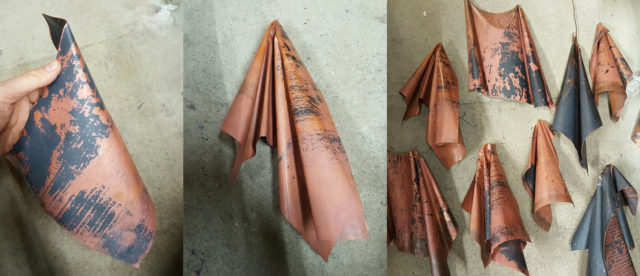

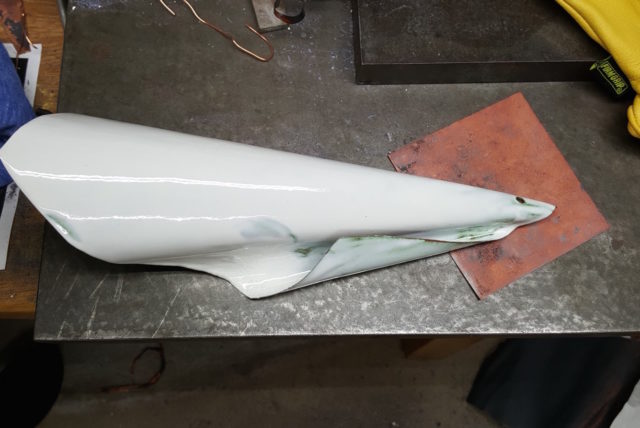
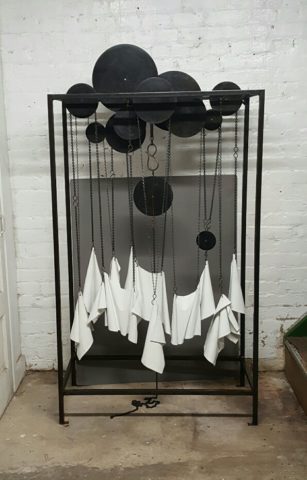
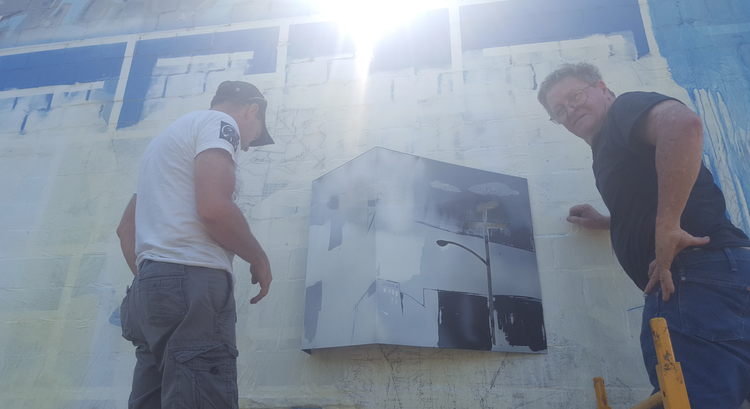 There is no shortage of things to get done with a project of this size, I am realizing. Once the work was crated up and safely on its way back to Dallas, I spent a few extra days in California with my husband, a brief bit of down time. When I returned,
There is no shortage of things to get done with a project of this size, I am realizing. Once the work was crated up and safely on its way back to Dallas, I spent a few extra days in California with my husband, a brief bit of down time. When I returned, 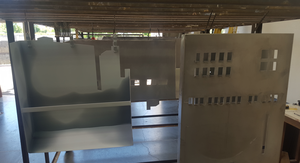 The process of enameling at KVO was a bit of a fast – slow – slow pace. I would have windows of time that I would have my spray gun ready to hop into the spray booth and get a coat on during the workers’ breaks. Their workday would usually begin at 6am and go until 3pm. I got into the habit of getting there around 7am, enjoying the time just being in the space and listening to the guys chat.
The process of enameling at KVO was a bit of a fast – slow – slow pace. I would have windows of time that I would have my spray gun ready to hop into the spray booth and get a coat on during the workers’ breaks. Their workday would usually begin at 6am and go until 3pm. I got into the habit of getting there around 7am, enjoying the time just being in the space and listening to the guys chat. 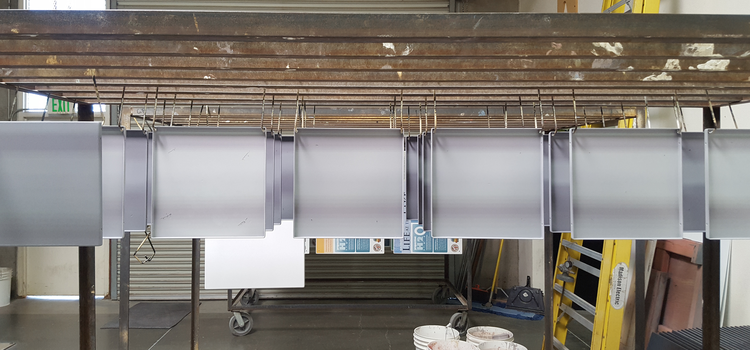
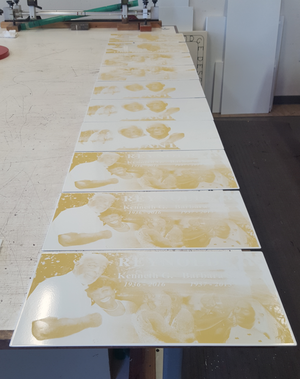
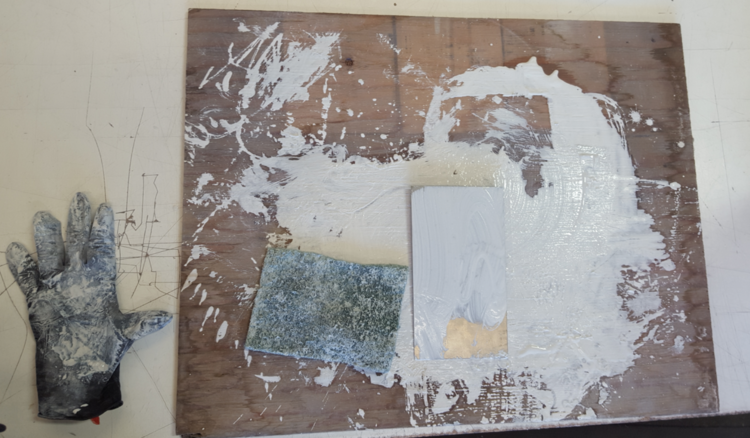 Finally midday my crate arrived and work would really begin. The panels would need to be sanded in the areas where rust had begun to form and a few needed additional tabs added for hanging. The interior of the KVO kiln is eight feet long and seven feet high and three feet deep. There are hanging tracks on both sides so during high production they do not have to wait for a load to cool and be unloaded before doing the next firing. By the end of my second day the panels were washed and ready to begin work.
Finally midday my crate arrived and work would really begin. The panels would need to be sanded in the areas where rust had begun to form and a few needed additional tabs added for hanging. The interior of the KVO kiln is eight feet long and seven feet high and three feet deep. There are hanging tracks on both sides so during high production they do not have to wait for a load to cool and be unloaded before doing the next firing. By the end of my second day the panels were washed and ready to begin work.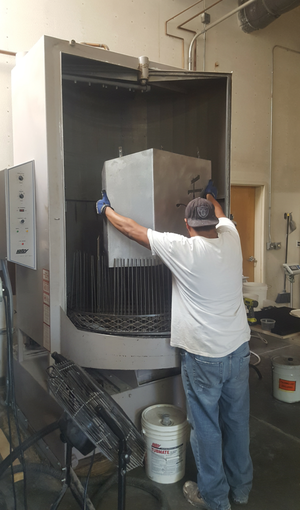
Recent Comments